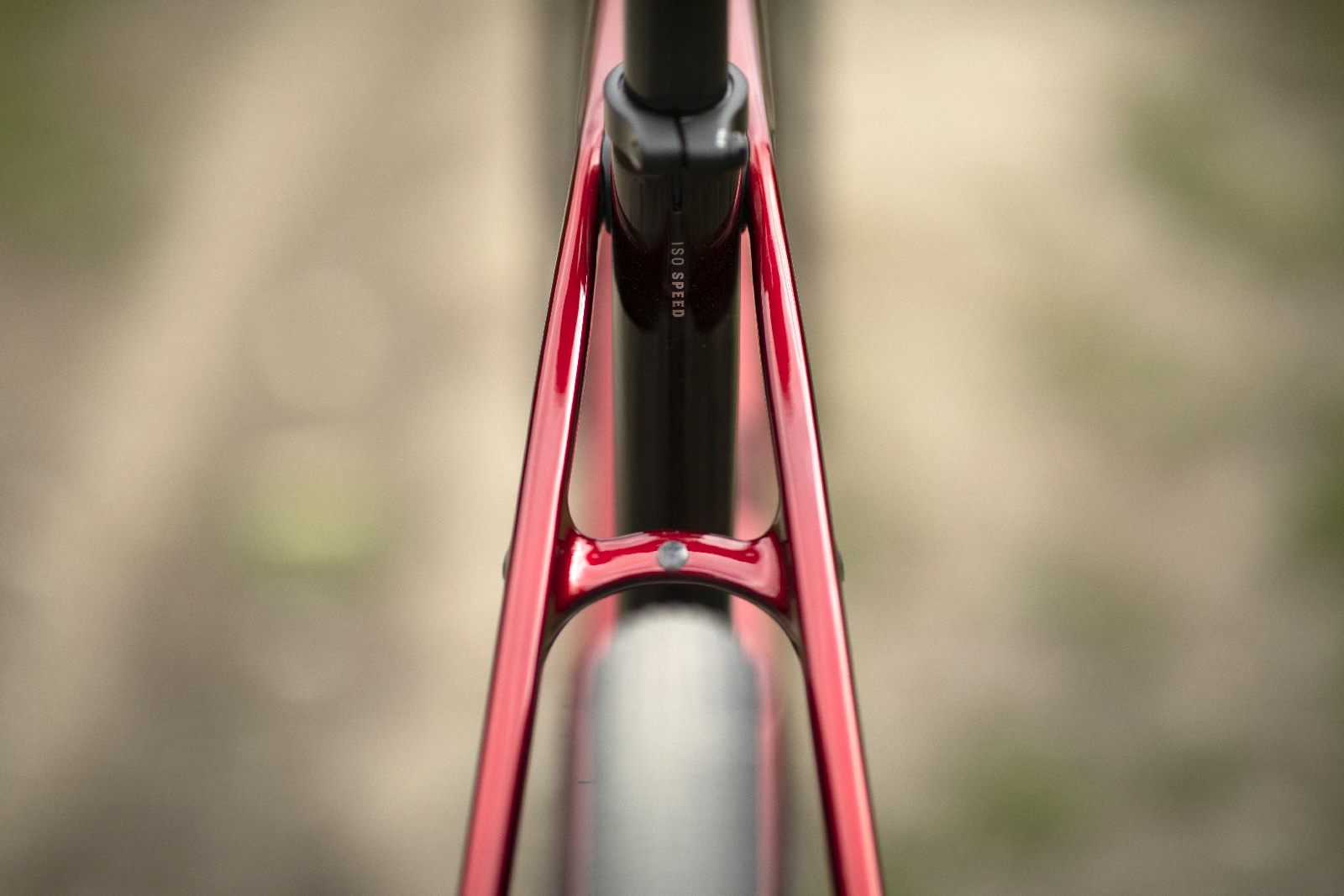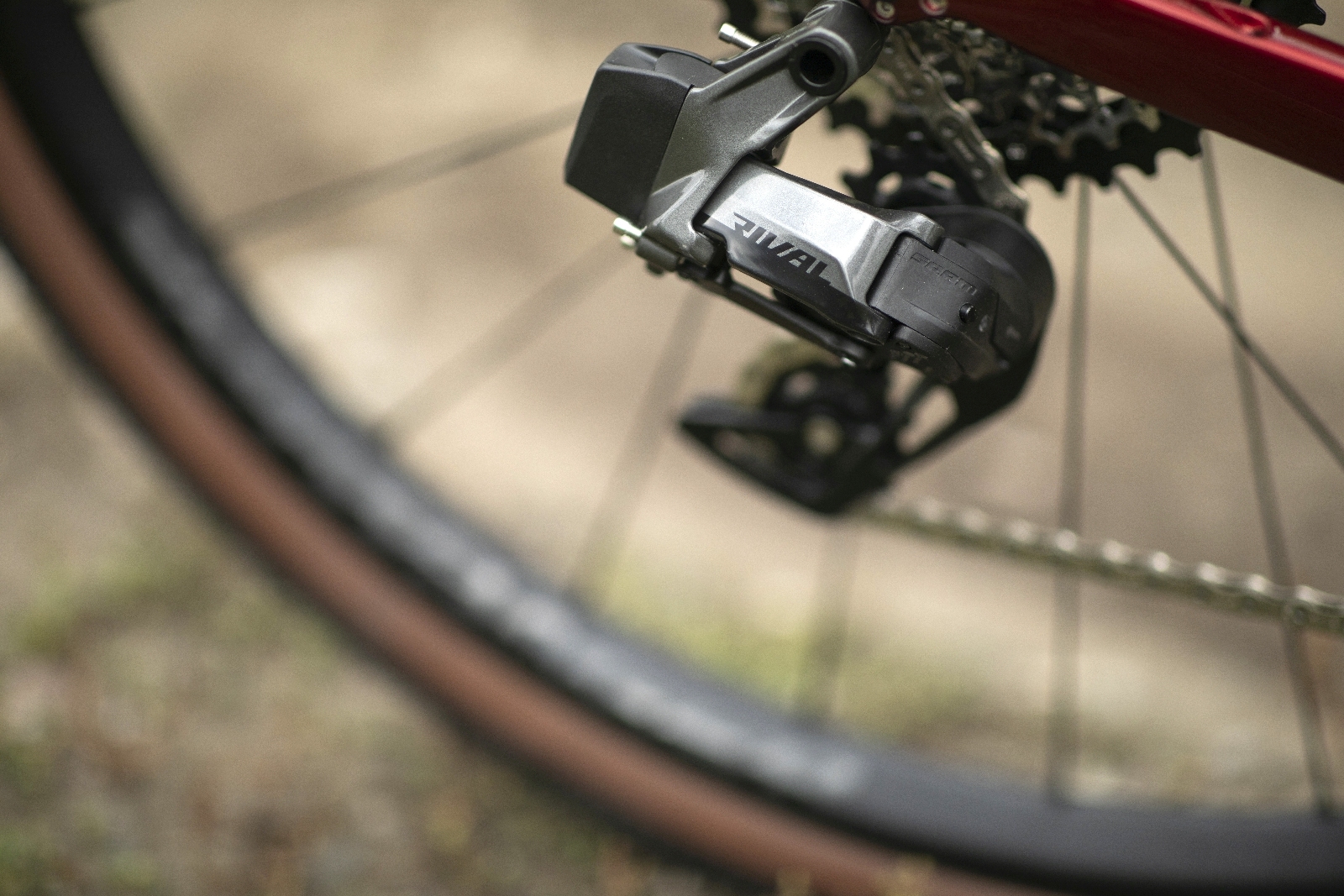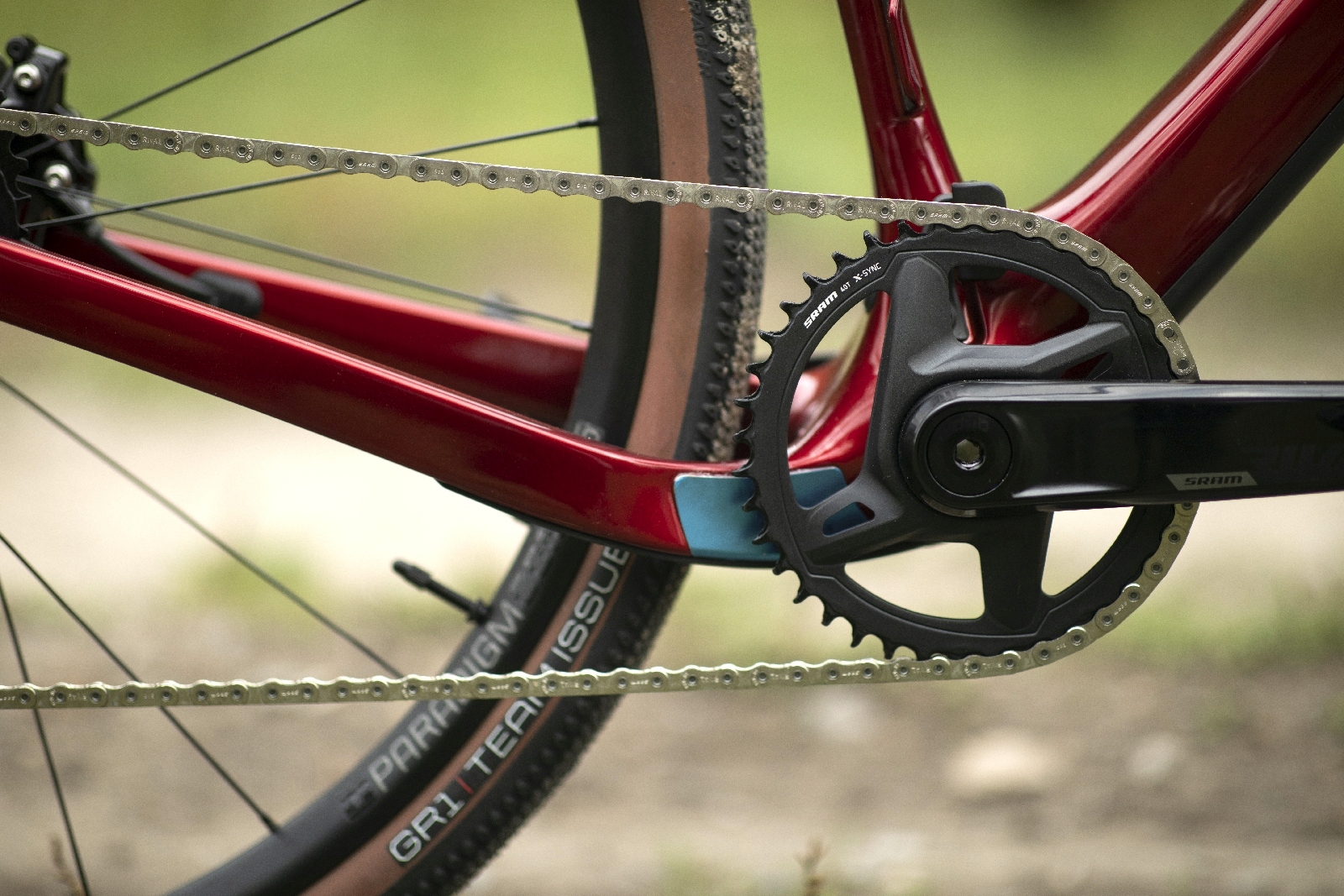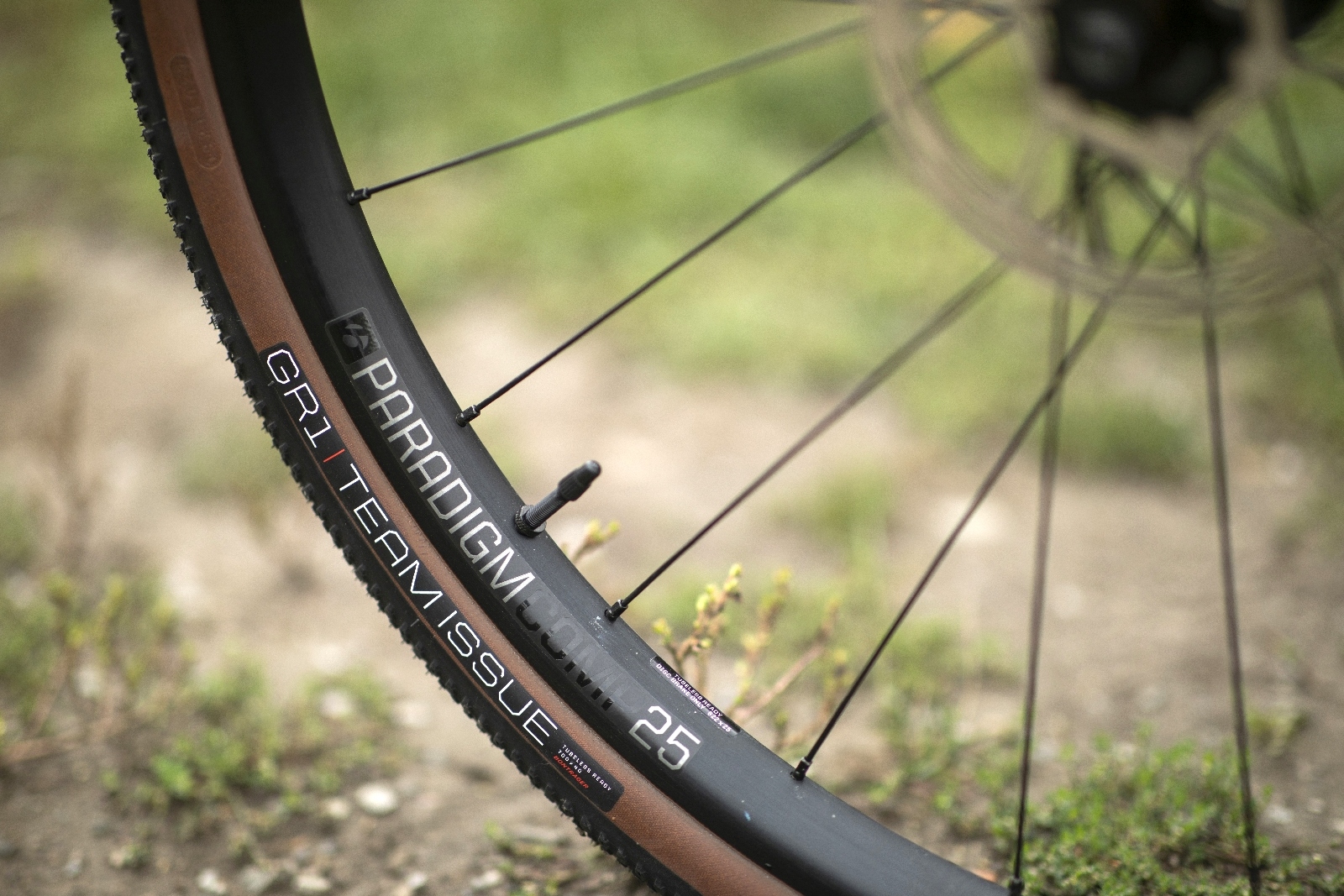Trek Checkpoint SL 6: A first look at the new do-it-all gravel bike
Also, a tour of the revamped lineup of bikes and bags for mixed-surface adventures
 Photo by:
Nick Iwanyshyn
Photo by:
Nick Iwanyshyn
With the launch of the new 2022 Trek Checkpoint, Trek says that it has hit upon a geometry that works for all types of gravel-riding scenarios. With the previous Checkpoint, the Waterloo, Wisc.-based company had built a gravel bike that worked well in its own backyard, the Midwestern U.S. But, of course, gravel riding in the U.S. and across North America is so varied. What of steep mountain routes? Apart from the terrain, what of the rider’s goals? Some riders head to gravel to race. Others want to strap on bags and bash around in the woods. Gravel can mean so many things. To cover more gravel, if you will, Trek has expanded its Checkpoint lineup to include a third model at the top end. All three models of Checkpoint, however, are built around the same geometry. Can one set of numbers (scaled to suit each of the bike’s six frame sizes) really handle all forms of gravel riding? Trek thinks so.
The Trek Checkpoint geometry
Trek first introduced the Checkpoint roughly three years ago. It was the company’s first true carbon-fibre gravel bike and a solid performer on flatter, faster gravel routes. Trek wanted it to do more though. “What we wanted to add, for capability, was the mountain-gravel experience—get a little more capability out of the bike,” says Travis Braun, lead project engineer. Braun and others on his team took five prototypes to Utah. “We tested this out in Salt Lake City. We rode some mountains out there. Our group of test riders all found one geometry that we liked for multiple situations.”
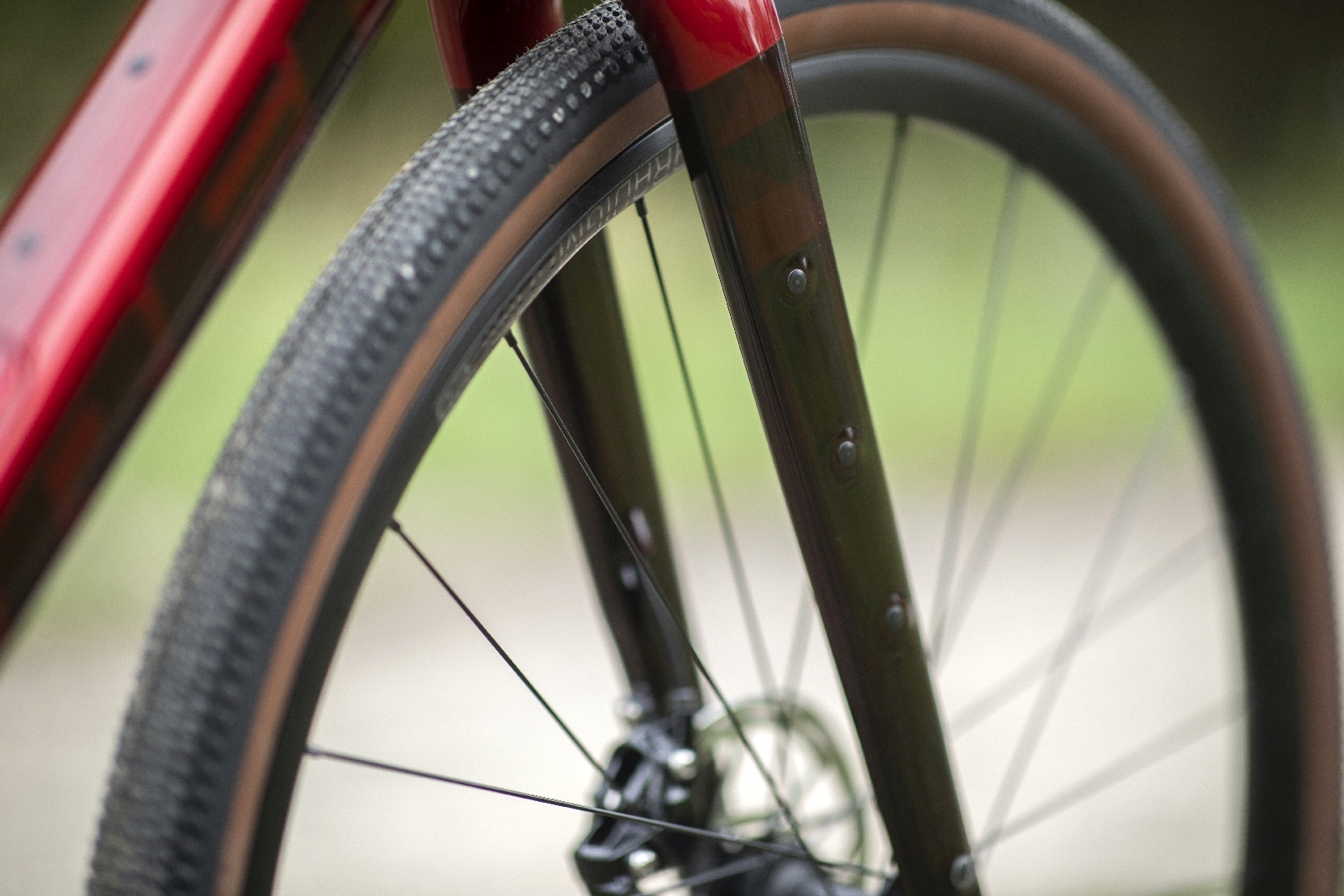
Trek is lifting a term from the mountain bike side to describe the Checkpoint’s design: progressive geometry. The new frame has a front centre measurement that’s 2 cm longer than the previous one. The wheelbase gets longer, too. In Size 54, the previous Checkpoint had a wheelbase of 1,014 mm. The new model of the same size is 1,041 mm. These new figures help the bike to cruise and maintain speed along straight stretches. So that the bike could also perform well on twisty bits, designers spec’d a shorter stem. The Size 54 runs an 80-mm-long stem, whereas the old model had a 90 mm. The latest Bontrager handlebars on the Checkpoint help to keep things nimble as well.
Braun says the frame’s design also allows you to get your weight back easily so you can get over obstacles.
This geometry runs through all of the new Checkpoint frames: the aluminum ALR, the carbon-fibre SL and the new-to-the-lineup SLR with Trek’s premium carbon-fibre formula.
Trek Checkpoint SLR
The new, top-tier Trek Checkpoint SLR is made for winning gravel events. SLR stands for “super light racing” so the frame is made with one of the company’s best carbon-fibre formulas. In this case, it’s the 700 Series OCLV Carbon. (The SLR versions of the Madone and Émonda use 800 Series, while the Domane SLR has the 700.) The Checkpoint SLR is about 200 g lighter than the SL.
If you are familiar with Trek’s road bikes, you’ll know about IsoSpeed, the company’s vibration damping technology. On the Checkpoint SLR, there’s IsoSpeed in the top tube near the seatpost to give the seatpost more flex. This IsoSpeed is new. Unlike on the Domane and Madone, the Checkpoint’s IsoSpeed is non-adjustable. This internal setup should keep everything clean and away from grit. It’s lighter, too. Also, Trek found most riders don’t adjust their IsoSpeed settings much. With the Checkpoint, you have the company’s more compliant setting to keep you more comfortable on rough gravel.
In the down tube, at the bottle cage mounts, is a storage compartment. Trek first introduced this feature on the Domane that came out in 2019. You can put stuff in here that you’d usually keep in a seat bag, such as a multi-tool, CO2 and tube. The bike also has mounts under the top tube for affixing Bontrager’s new frame bag, as well as mounts for a top-tube bag and fenders. You can’t, however, run racks.
SLR models come built with Shimano GRX Di2 or SRAM Red, Force or Rival eTap AXS.
Trek Checkpoint SL
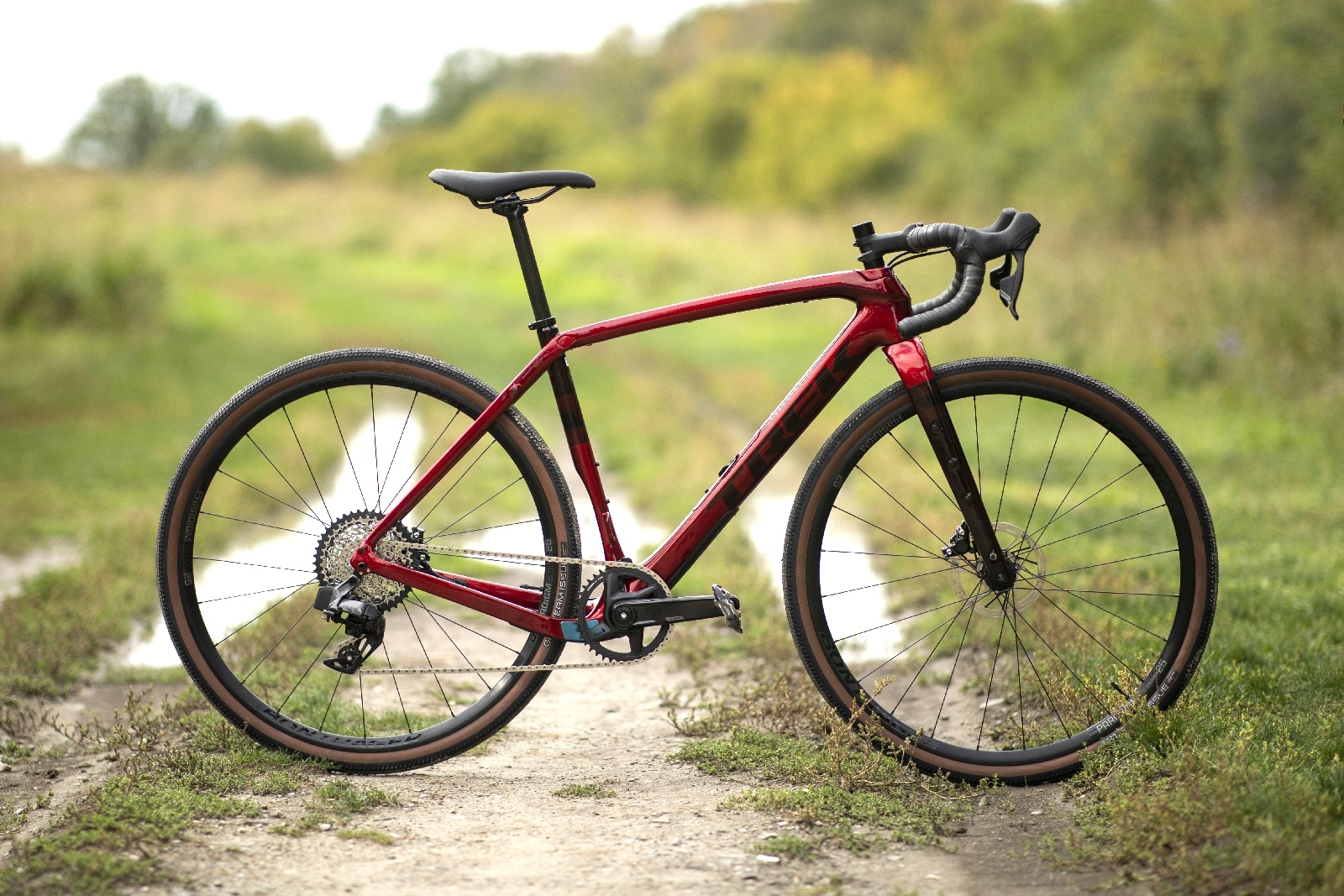
The Checkpoint SL is the most versatile model. It’s built with 500 Series OCLV Carbon, so it weighs a bit more than the SLR. Still, if you want to race the SL, you can (and should). If you want to head on a bikepacking adventure, the SL is your machine.
The SL has even more mounts than the SLR. You can put a rack on the SL. Its fork blades have mounts, so that you can carry as much as 3 kg of stuff on each blade. The SL has the down-tube storage compartment as well.
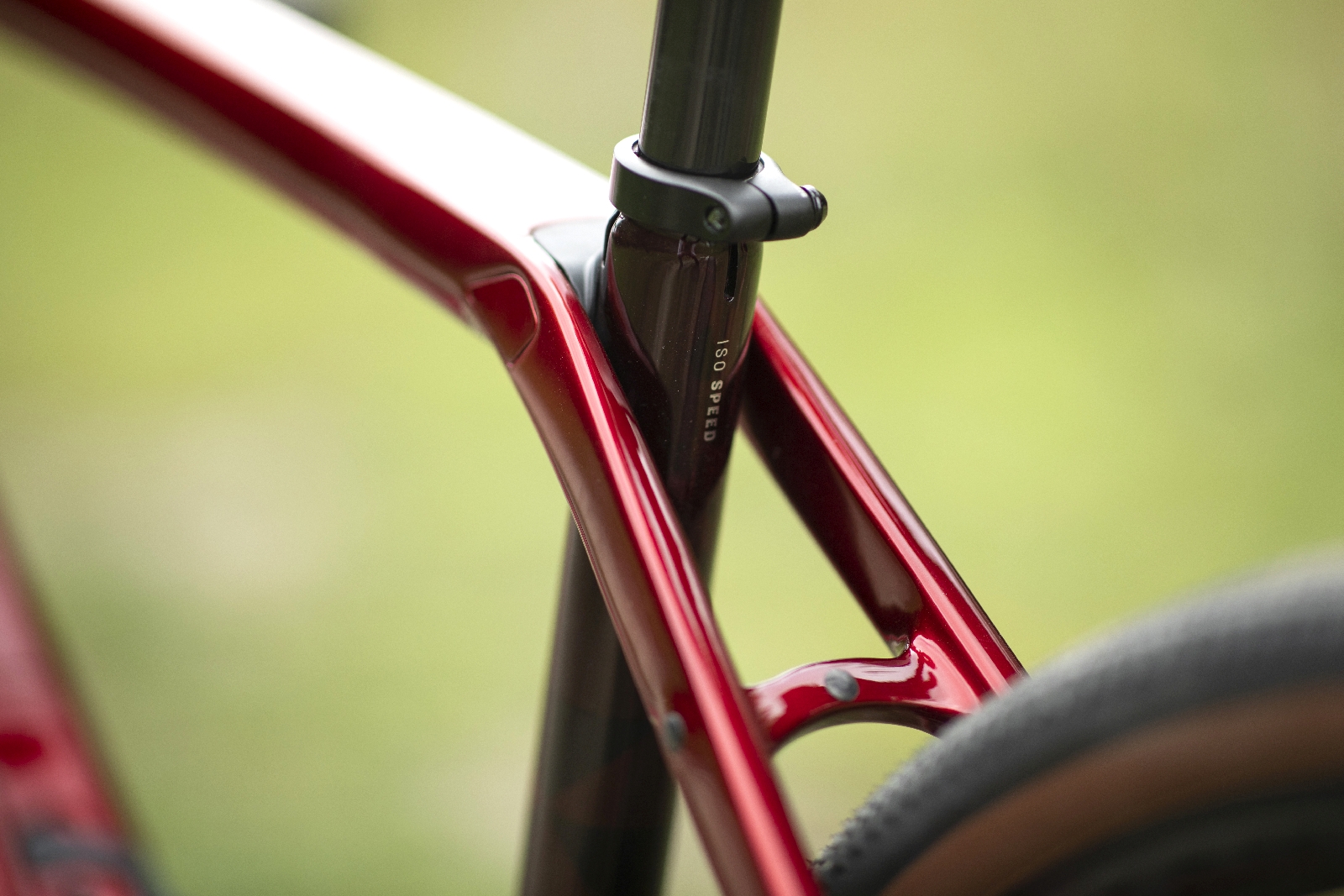
The Checkpoint SL’s saddle sits on a 27.2-mm seatpost. You can run a dropper post to help you get that saddle out of the way for steep descents and to put your weight back. This frame uses a non-adjustable seat-tube IsoSpeed for dropper-post compatibility. It is less compliant than the SLR’s top-tube IsoSpeed.
The SL models are spec’d with SRAM Force or Rival eTap AXS, or Shimano mechanical GRX.
Trek says the SL can accept some suspension forks. (The SLR can’t.)
The Checkpoint SL really is the do-it-all gravel bike.
Trek Checkpoint ALR
The ALR model of Checkpoint has an aluminum frame. The material makes for a more price-point bike.
The ALR resembles the SL quite closely. They both have the same generous amount of mounts. They can run dropper posts. What the ALR doesn’t have is the down-tube storage and IsoSpeed.
The Checkpoint ALR 5 comes with a mix of GRX RX600 and RX810 parts.
New Bontrager handlebars
All models of Checkpoint use handlebars with a 75-mm reach and 128-mm drop. These dimensions, in conjunction with the shorter stems on the bikes, keep the steering of all the Checkpoints nicely responsive.
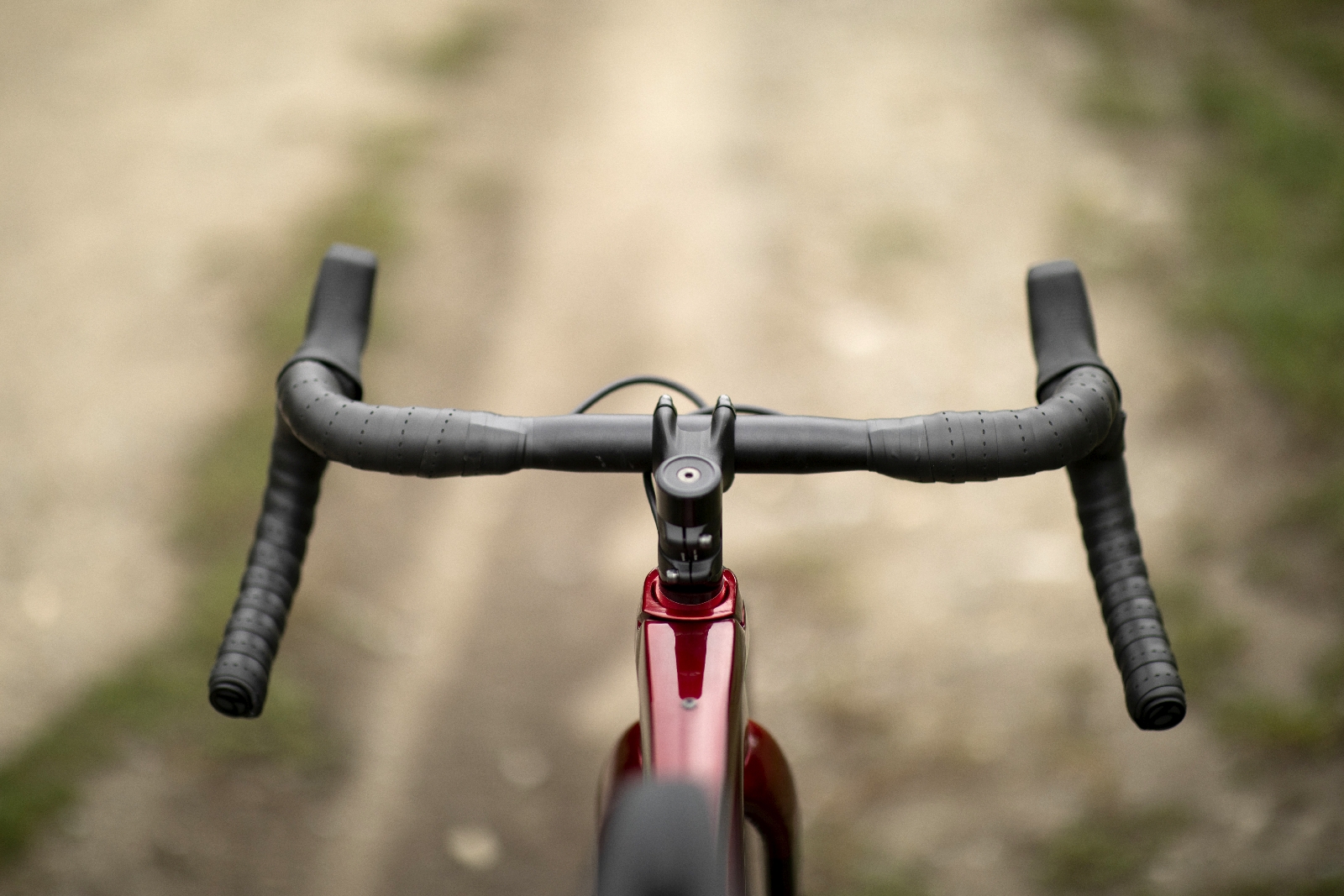
The ALR and SL bikes have the new alloy Bontrager GR Elite handlebar. It has a 13-degree flare outward so you can be comfortable and in control on steep descents.
The SLR runs the carbon Bontrager Pro IsoCore VR-SF road handlebar with a 4-degree flare.
Wheels and tires
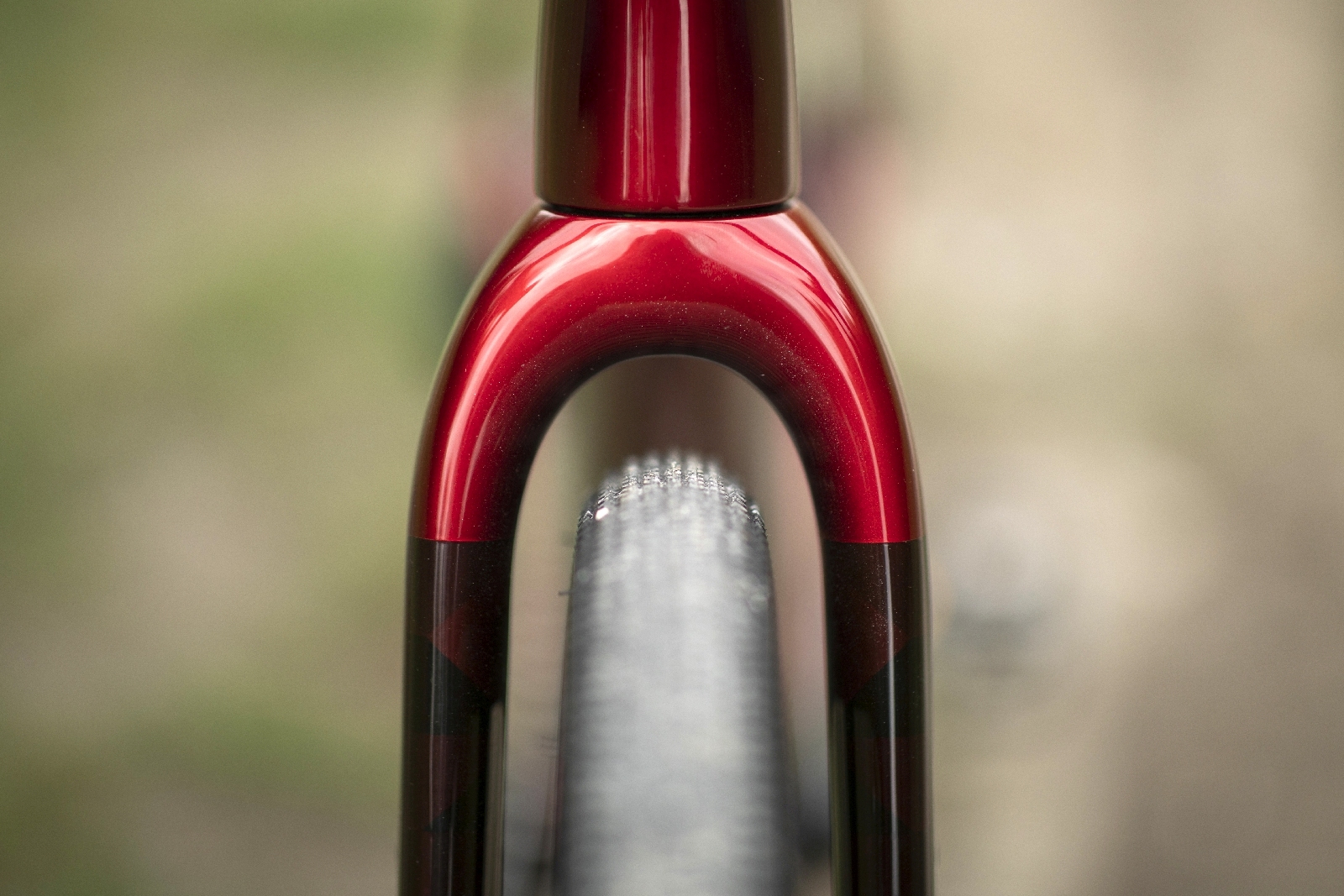
The Checkpoint can run 45 mm wide tires that are 700c in diameter. There should be about 6 mm of clearance between the tire and frame or fork. Each bike comes spec’d with 40-mm treads. Trek designed the Checkpoint around 700c wheels because they’ll move you faster and roll over more stuff than 650b. Still, you can put on 650b hoops with tires as wide as 2.1″ (53 mm). With 650b wheels, expect to take a slight penalty in the handling department because the bottom bracket will go lower.
Bontrager Adventure bags
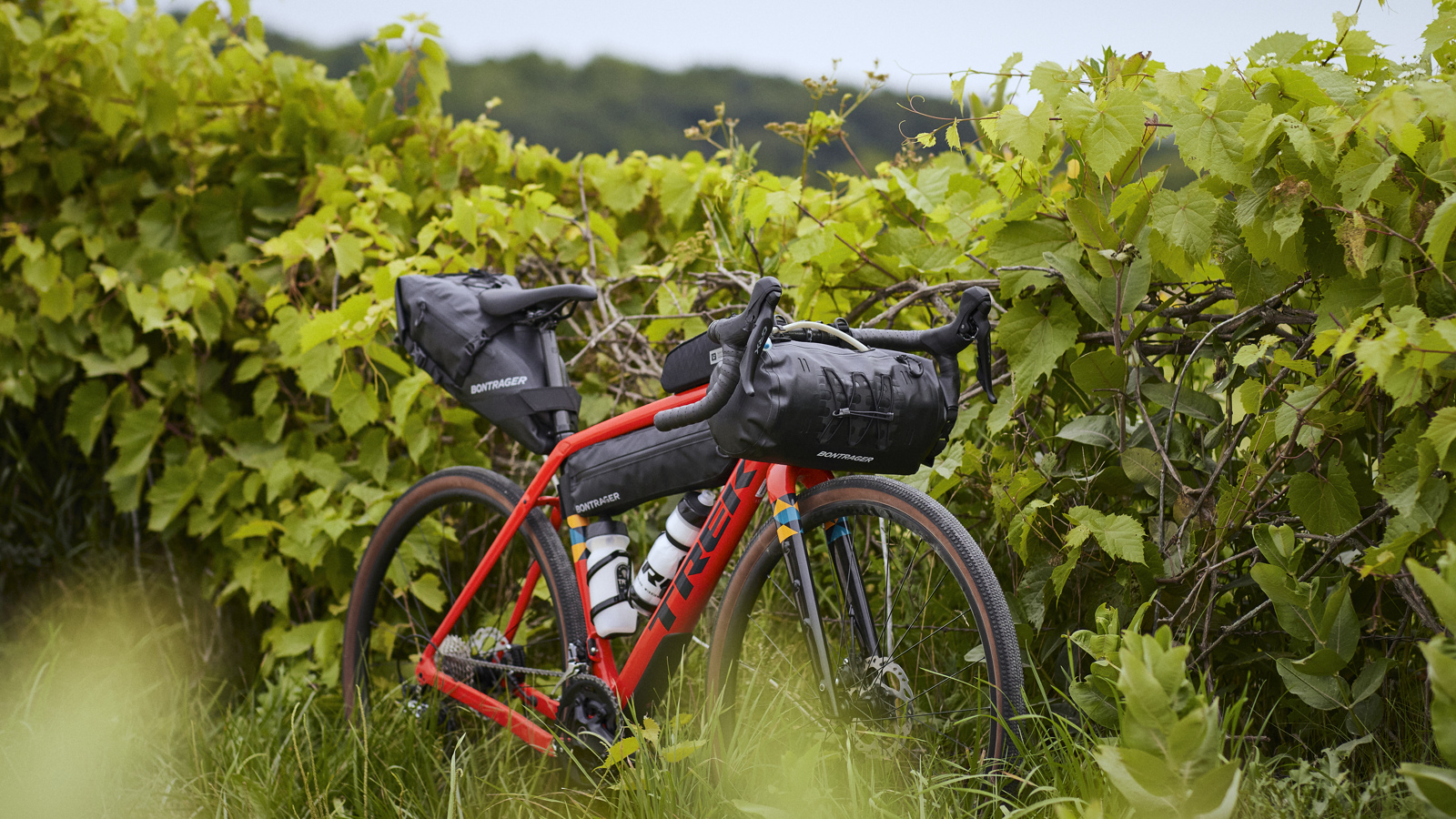
Bontrager has new Adventure bags for your bikepacking trips. The Adventure Boss frame bag is designed to work with the mounts on the underside of the top tube. There’s a Boss bag for each size of Checkpoint. A 1.3-l bag fits in a Size 49 frame. The Size 60 frames gets a 5.9-l bag. All Boss bags have a high-viz fabric on the inside to make things easier to find: no rooting around in frustration for a black Allen key in a black bag.
The 9-l handlebar bag holds a 1.5-l water bladder. The seat bag is also 9 l. Each one is built with waterproof materials, but is not guaranteed to be waterproof.
Prices for 2022 Trek Checkpoint models
| Model | Canadian Price |
|---|---|
| Checkpoint SLR 9 SRAM Red eTap AXS | $16,800 |
| Checkpoint SLR 7 Force eTap AXS | $10,950 |
| Checkpoint SLR 7 Shimano GRX Di2 | $10,950 |
| Checkpoint SLR 6 Rival eTap AXS | $9,500 |
| Checkpoint SL 7 Force eTap AXS | $7,900 |
| Checkpoint SL 6 Rival eTap AXS | $5,400 |
| Checkpoint SL 5 Shimano GRX | $4,000 |
| Checkpoint SL frameset | $2,900 |
| Checkpoint ALR 5 Shimano GRX | $3,000 |
| Checkpoint ALR frameset | $1,470 |
First ride impressions of the Trek Checkpoint SL 6
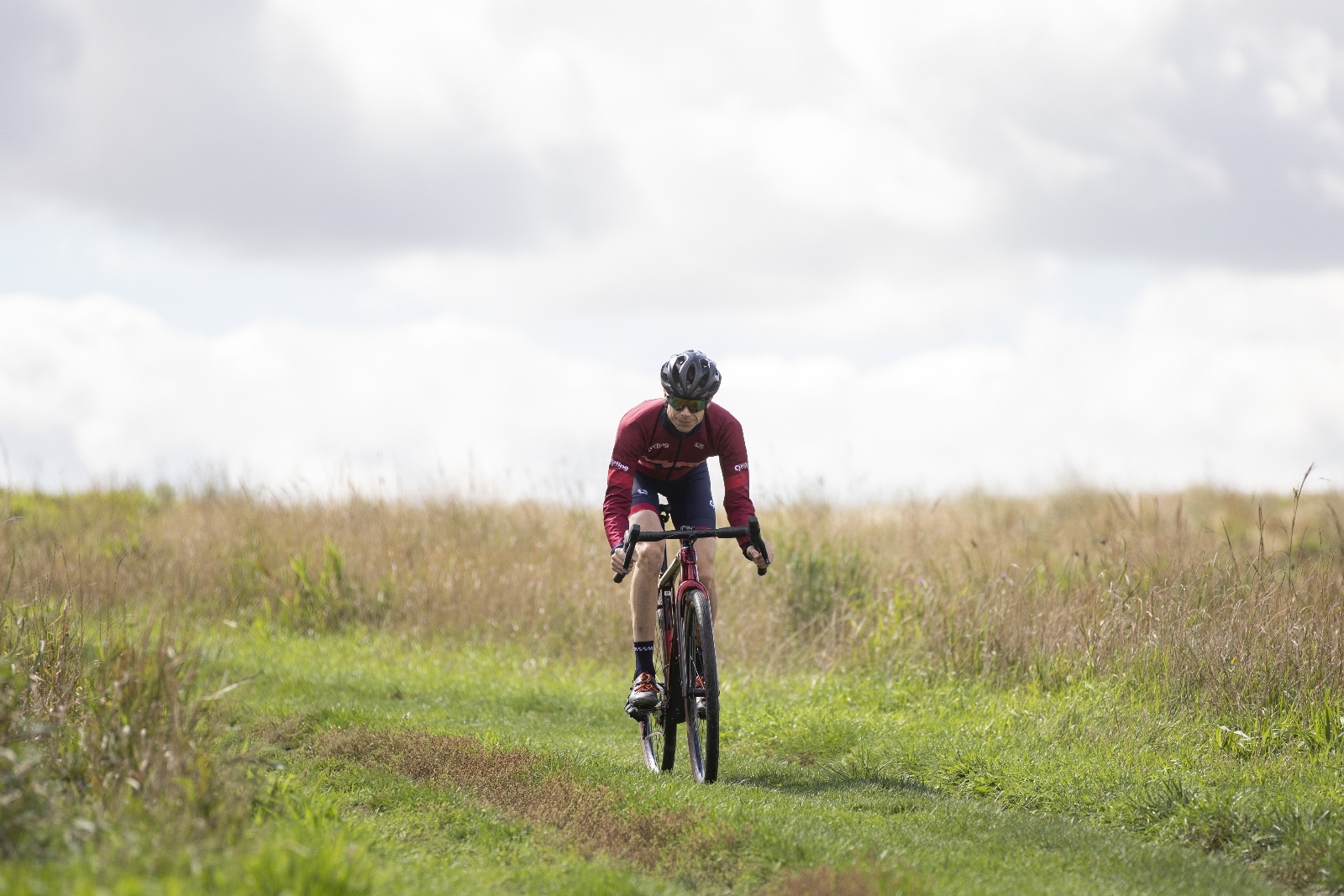
After a few short rides on the Trek Checkpoint SL 6, it seems that designers have in fact made a bike that tracks well when you are following straight roads, but has the agility for twists and turns. The wide 40c tires and IsoSpeed in the seat tube have kept me comfortable over the bumps.
At 13 degrees, the handlebar is at my limit for flare. I find the shape puts my wrists at an uncomfortable angle when I hold onto the hoods. Riding in the drops, on the other hand, is great. On a steep singletrack descent, I felt nicely in control.
While I don’t have the new Adventure bags yet (they are on their way), the bike seems ready for them, especially the frame bag. The rubber plugs that fill the mounts under the top tube keep dropping out. The others seem fine. Once I get the frame bag, though, I won’t have to worry about the plugs. My concern will be where to ride the Trek Checkpoint SL 6. As the temperatures are dropping, I wonder if a big bumpy adventure will be possible. If not, I’ll have to find a way to keep this bike for even longer.

